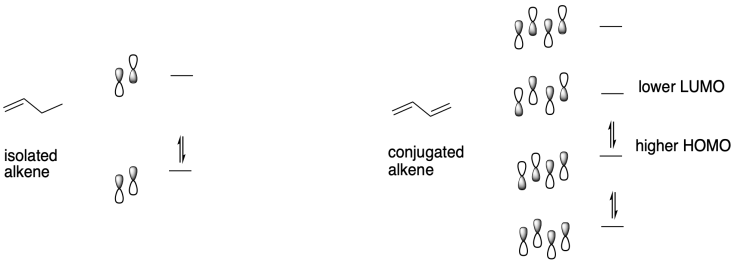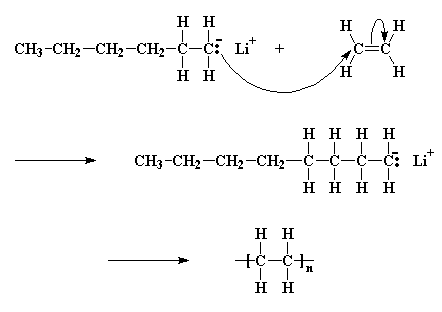Let s see how we get from a vinyl monomer to a vinyl polymer using for an example the simplest vinyl polymer polyethylene polyethylene is made from the monomer ethylene which is also called ethene when polymerized the ethylene molecules are joined along the axes of their.
Anionic polymerization of vinyl chloride.
Copolymerization initiated by n butyllithium.
Polymerization of vinyl chloride with butyllithium and its complexes v.
Of the organometallic compounds tested as initiators only butyllithium was found to initiate polymerization.
Anionic polymerization of vinyl chloride table iv chain branching in pvc prepared by anionic and radical polymerization sample mn chj1000 c atoms 2a 3a 4a a chain branching of these samples determined by dr.
Free radicals can be formed by a number of different mechanisms usually involving separate initiator molecules.
B data of talamini et a1 21y22 radical 50 cb radical 0.
Abbis polymer group department of organic chemistry chalmers university of technology goteborg sweden.
Anionic polymerization of vinylidene chloride.
Following its generation the initiating free radical adds nonradical monomer units thereby growing the polymer chain.
That is small molecules containing carbon carbon double bonds.
Anionic addition polymerization is a form of chain growth polymerization or addition polymerization that involves the polymerization of monomers initiated with anions.
The type of reaction has many manifestations but traditionally vinyl monomers are used.
Often anionic polymerization involves living polymerizations which allows control of structure and composition.
Polymerization in bulk at 0 c.
Macromolecules 2010 43 6 2739 2747.
Sklizkova institute of macromolecula compounds u s s r.
Living cationic polymerization of vinyl ether with methanol metal chloride initiating systems.
They make up largest family of polymers.
Free radical polymerization frp is a method of polymerization by which a polymer forms by the successive addition of free radical building blocks.
Cationic polymerization of polar monomers such as vinyl ethers and styrene derivatives played a critical role in accomplishing ideal living cationic polymerization of vinyl type monomers.
Anionic polymerization of vinyl chloride has been studied.
The mechanism of radical polymerization is illustrated below for the polymerization of chloroethene vinyl chloride.
Q as is typical for initiating radical reactions an initiator usually a peroxide is employed.
Arihiro kanazawa shokyoku kanaoka and sadahito aoshima.
Relationship between polymerization behavior and the nature of lewis acids.
Thus in this chapter general aspects of cationic polymerization are discussed followed by a brief overview of early development of living cationic polymerization.
Academy of sciences received 10 january 1967 in the anionic polymerization of vinyl chloride vc especially with lithium alkyls ill the termination step is a major factor and this leads to rapid slowing dowel of the.










